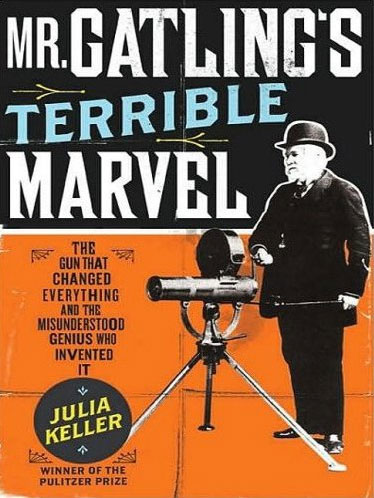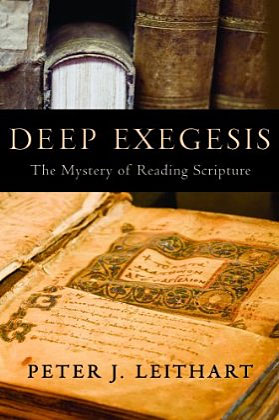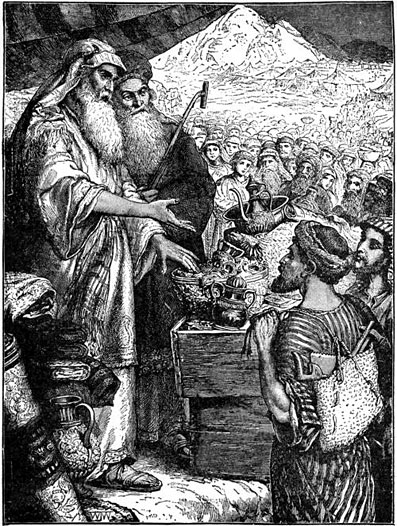Jul
3
2009
“Be meticulous to present yourself for the praise of God as an unashamed workman, cutting the word of truth in a straight line.” (II Timothy 2:15)
Is this verse simply teaching that if we “divide up” the Scriptures correctly, we’ll get an AWANA[1] merit badge from God? Hardly. It is flanked by condemnations of those who fight over the Scriptures to no profit, and those whose vain babblings are gangrenous.
Paul speaks of a soldier and a farmer, and then a productive workman. Paul is concerned about building saints and churches, and they are built by a straight and true cutting of the word. Like most of Paul’s statements, there is a very long, fully-loaded freight train of Old Testament history and typology right behind it, and it’s coming right at you, right now.
Continue reading
Comments Off | tags: Darius, David, Esther, Ezekiel's Temple, Nebuchadnezzar, New Jerusalem, oikoumene, Peter, Peter Leithart, Postmillennialism, Revelation, Solomon, Stigmata, Temple, Totus Christus, Worship | posted in Biblical Theology, Christian Life, The Last Days, The Restoration Era
Jun
30
2009
 “And their dead bodies will lie in the street of the great city which spiritually is called Sodom and Egypt, where also our Lord was crucified.” – Revelation 11:8
“And their dead bodies will lie in the street of the great city which spiritually is called Sodom and Egypt, where also our Lord was crucified.” – Revelation 11:8
Revelation 20 makes it clear that the “second death” is the lake of fire. But an analysis of the literary structure of Revelation brings out an interesting factor.
Continue reading
Comments Off | tags: Against Hyperpreterism, Armageddon, Atonement, Azal, Egypt, Feasts, James Jordan, Passover, Peter Leithart, Revelation 20, Smyrna, Sodom, Systematic typology, Tabernacle | posted in Biblical Theology, The Last Days, Totus Christus
Jun
29
2009
James Jordan’s work on the Jew-Gentile oikoumene set up in Daniel has far reaching implications.1 Peter Leithart writes:
“Yoder argues that from the time of the Babylonian captivity, the Jews developed a proto-”free church” model of community life. True in some respects. Jews didn’t have their own polity. But I’ve got doubts if that’s a fair characterization of Jews in and after the exile.
Continue reading
Comments Off | tags: AD70, Archaeology, Daniel, Esther, Exile, Hellenism, Mordecai, Nehemiah, oikoumene, Peter Leithart, Tertullian, Yoder | posted in Biblical Theology, Quotes, The Last Days, The Restoration Era
Jun
20
2009

or Typology: Deadly Weapon or game of Scattergories?
“Chiastic literary analysis has completely destroyed liberal literary criticism. Liberalism is in tatters, bleeding and dying. Liberalism cannot survive Dorsey’s chiastic proof of the total unity of Isaiah, for instance. Dorsey finds loads of 7-fold chiasms in the Bible. I’ve found scores more, quite independently. What Dorsey does not see is that these are recaps of the chiasm of the 7 days in Genesis 1. And that’s good, because it means he did not go through the Bible forcing passages into heptamerous chiasms. He just found them there, and others can see that these track Genesis 1 as ‘new creation’ passages.”
—James B. Jordan, A Reply on the Nature of the Psalter, Biblical Horizons blog, biblicalhorizons.wordpress.com, referring to David A. Dorsey, The Literary Structure of the Old Testament.
If chiastic literary analysis (along with typology as I posted recently) is such a powerful weapon against a modernist interpretation of the Bible, why are these methods of study shunned by those who oppose liberal theology? Why are theologians hauled over the coals for using it if it leaves the enemy in shreds?
Continue reading
4 comments | tags: David A. Dorsey, David Field, Liberal theology, Peter Leithart, Systematic typology, Typology, Warren Gage | posted in Apologetics, Biblical Theology, Totus Christus
Jun
15
2009
From Peter Leithart today:
“With what disgust, contempt, and hatred Christ must look upon every second of our lives, the reviewing of which must be a long torture for us, were such a judgment in our future!”
These are the words of a Presbyterian minister, writing in a prominent evangelical magazine. He’s trying to refute the belief that we’ll be judged according to works at the last day. He’s wrong on that point. Continue reading
Comments Off | tags: Confession, Job, Liturgy, Peter Leithart, Satan | posted in Christian Life
May
14
2009

I was told once, after using a symbolic illustration from the Tabernacle while I was song-leading, that “we don’t want to head in that direction.” Basically, modern evangelicalism is not really all that interested in the Bible. The Tabernacle actually structures the New Testament at many levels, but modern Christians are classified as too dumb to cope with it. How many popular theologians ever deal with this stuff? This material IS the Bible.
Peter Leithart has been hauled over the coals for his use of typology in his commentary on Kings. But this is practically the same attitude the Jews have, when they accuse ALL Christians of eisegesis for seeing Christ in all the Scriptures.
Dr Leithart has a new book you can pre-order here, defending, I assume, his method. Those who question the validity of a sound use of typology would benefit from seeing how the Bible itself provides a safe framework for it.
I don’t know what examples Dr Leithart will give, but one that comes to mind is related to literary structure. When a passage of Scripture obviously recapitulates the structure and symbols of the Creation Week (as the one in my previous post did), is it eisegesis to draw from the passage interpretations related to this observation that are not actually written in the text? The Jews actually have it all over us on that one!
I do fear that Dr Leithart’s book might be an attempt to explain the how-to of flying like an eagle to a flock of emus. To use another analogy, the Bible is like a rainbow coloured balloon they are too afraid to actually inflate.
Comments Off | tags: Peter Leithart, Typology | posted in Biblical Theology
May
2
2009
Peter Leithart writes:
Reflections on a class discussion earlier today about place, our connection to the ground, and gnosticism.
- Blood and soil are “powers” that can and have dominated human life, and caused lots of human misery.
- Jesus overcomes those powers. We are identified by water and feast, not by blood or color or place.
- YET (here’s where my thought is undeveloped): Jesus doesn’t just overcome and send the powers packing. He pacifies and reconciles powers; He turns them to the purposes of His kingdom (Col 1-2).
The dilemma: How to express the reconciliation of blood and soil without falling back into the old creation, and without going fascist? How to express Jesus’ pacification of “blood” without letting it usurp the place of the water, and how to express Jesus’ pacification of “soil” without letting it usurp the place of the feast?
Continue reading
Comments Off | tags: Atonement, Canaan, Communion, Compromise, Gnosticism, Herod, High Priest, Holy Place, Most Holy Place, nationalism, Nazirite, New earth, Nimrod, Peter Leithart, Worship | posted in Biblical Theology
Apr
28
2009
or How Modern Conservative Theologians Unwittingly Use Literary Genres to Mask Their Unbelief
One of the big problems with modern theology is its habit of categorising parts of the Bible into literary genres. For sure, the Bible contains historical prose, visions, poetry and songs. But many passages won’t actually fit into these neat little pigeon holes without hamstringing their intended purpose. And as it turns out, these “genre-lisations” are excuses to compromise with humanistic pop-philosophy and pop-history.
The three main gripes I have are misuses of the genres poetry, polemic and apocalyptic.
Continue reading
1 comment | tags: Apocalyptic, Daniel, David Field, Esther, Ezekiel, Gnosticism, Ideology, James Jordan, John Dickson, Peter Leithart, Restoration, Revelation, Rowan Williams | posted in Biblical Theology, Creation, The Last Days, The Restoration Era
Apr
23
2009

“…Powers don’t enjoy being exposed as frauds, and so the Church, like Jesus, has often provoked vicious opposition. But the effort of the powers to shore up their position is hopeless. The worst they can do is kill Christians, but that just means the cross gets repeated over and over, repeatedly revealing the iron fist beneath the velvet glove. Against a cruciform Church, the powers are helpless as babes.
Continue reading
Comments Off | tags: Ecclesiology, Peter Leithart, Postmillennialism, Revolution | posted in Biblical Theology, Quotes
Apr
16
2009
A thought from a student exam: In Mark’s gospel, as soon as the veil of the temple is torn, the centurion confesses Jesus as Son of God. It’s a crucial scene because it’s the first time any human recognizes Jesus as Son.
And the sequence of veil and confession is crucial. The temple existed to keep people away from the presence of Yahweh. Jews were called to be nearer, and Gentiles further. If the temple is open, it doesn’t fulfill this function anymore. There’s a way into the holy place, and at the very moment a way is made into the holy place the division of Jew and Gentile becomes irrelevant.
Peter Leithart, www.leithart.com
Brilliant observation. It reminded me that the firmament of Day 2 (and the 2nd Tabernacle speech, which concerns the veil) correspond to the Confession in the liturgical pattern set by the Creation week.
Comments Off | tags: Creation Week, Holy Place, Peter Leithart, Tabernacle, Veil | posted in Biblical Theology






























